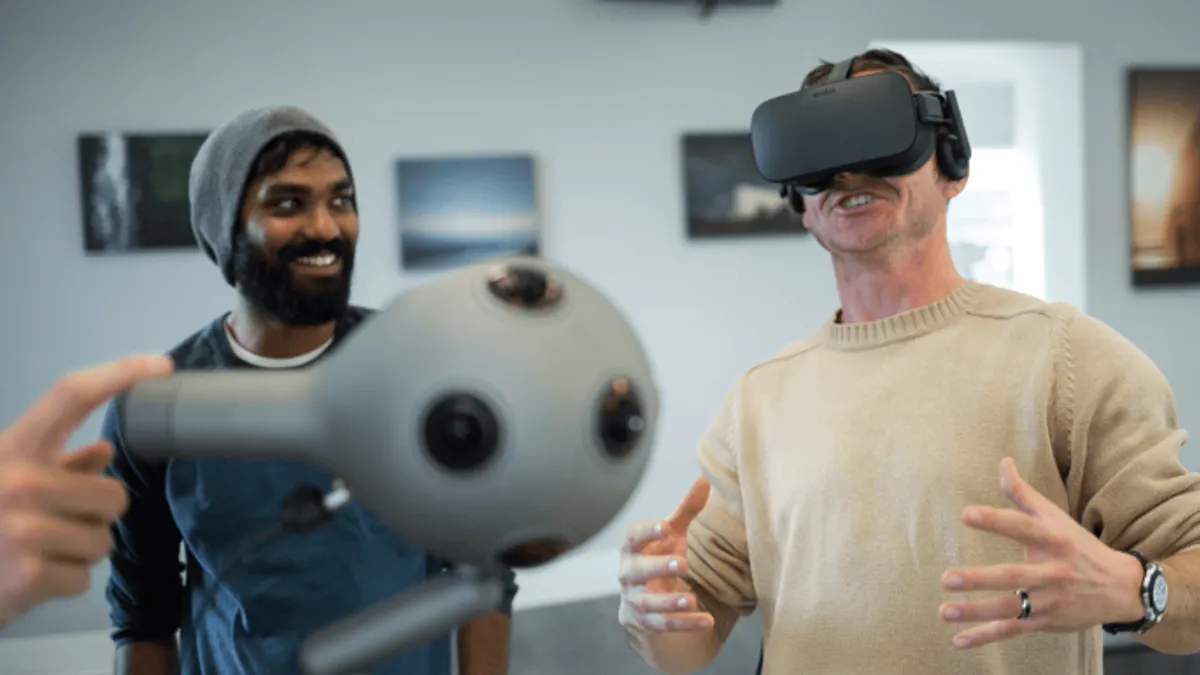In 2017, a focus on adult learners was named the Education Dive: Higher Education Obsession of the Year, and for good reason: According to the National Center for Education Statistics, 8.1 million students enrolled in higher education — or more than 40% — in 2015 were 25+ years old.
While 2017 saw a lot of attention placed on adult learners, the industry still has a long way to go on properly serving these students. But leaders may soon realize that many of the adjustments needed to better serve this population would also benefit other students. And it is likely that implementing these strategies may cut down on the overall cost of higher education and communicate additional value, as the physical campus experience is de-emphasized in the name of reaching more students where they already are.
With this in mind — and with a little help from some individuals and groups around the country who are keeping a close eye on the industry — we bring you five trends Education Dive expects higher education leaders to focus on in 2018.
1. Blurred lines: nonprofit and for-profit providers will work together toward new business model
There is a reason the Purdue-Kaplan deal was named Education Dive's 2017 innovation of the year.
"The future of higher ed, in general, is going to be an institution that comes out of the morphing of for-profit and traditional institutions," said former University of Phoenix President Bill Pepicello, "and Purdue-Kaplan is one of the stages of that development.
Instead, he sees more blended models and collaboration, like Purdue-Kaplan’s New U. The new PROSPER Act making its way through Congress to reauthorize the Higher Education Act includes provisions which will ultimately clear the way for more alternative programs to be considered eligible for financial aid and other federal funding — building on the Obama administration's external sites program. This should open the door to more hybrid and collaborative models, perhaps not on the level of Purdue-Kaplan, but certainly we can expect to see more partnerships like those emerging between traditional institutions and boot camps of late.
2. U.S. higher education as a top international export
The uncertainty of 2017 saw a decline in international students studying in the U.S., even as American universities found new, affordable ways to expand their international footprints. The University of Arizona, for instance, has been aggressively building micro-campuses that deliver collaborative degree programs to local students on the campuses of partner universities in countries including Mexico, Taiwan, the Philippines and Jordan.
Experts from EAB, the research and strategy group, predict that as U.S. universities face challenges at home, higher ed can expect to see rising interest in micro-campuses in 2018. “It’s still an open question as to how the U.S. political climate will influence international enrollments,” says Melanie Ho, executive director of EAB. As such, higher education leaders are beginning to shift their thinking from “how do we get more international students to come to the U.S,” to “what are the societal and workforce needs in different countries where we can help fill a gap.”
“In other words,” Ho said, “what strengths of U.S. higher education institutions can we export abroad?”
3. Re-imagining physical campus space
As leaders continue to find ways to integrate technology, provide online experiences that are more than simply dumping a course online through WebEx and other lecture services, higher ed administrators are thinking more intentionally about campus design.
“As teaching delivery models have evolved, so have the spaces needed for learning. A traditional lecture hall, for example, may sit empty while professors hold court in smaller classrooms that facilitate collaborative and interactive learning,” said JLL higher education practice leaders David Houck and Kevin Wayer in a joint email. “No wonder many public and private universities are using space utilization studies. Why build new facilities when you could use existing space more effectively?”
Houck and Wayer firmly believe “The tech-enabled campus of the future can only become a reality if universities have skilled people to manage smart building technologies and analyze the treasure trove of data coming from sensors and other connected devices.” In other words, systems are important, but people are most important.
4. More unbundling and microcredentials
Unbundling and microcredentialing have been on our trends lists for the last two years, and they remain on our list for 2018. “Students are no longer buying that whole college” experience, Jim Hundrieser, associate managing principal for institutional strategies at the Association of Governing Boards, said last March during the 99th annual meeting of the American Council on Education. Hundrieser referred to the idea of having to buy an entire album for one or two good songs, prior to the profusion of digitized media to illustrate why certificates, credentials and job-related curricula are becoming increasingly more important considerations for leaders of traditional institutions.
As free community college proposals take off in states across the country, it will be imperative for four-year institutions, particularly privates, to find ways to attract students who may not be looking for full degree programs. Increasing collaboration with local industries to provide shorter programs that specifically target skills and competencies needed to fill vacant jobs will not only propel the local economy, there will be a direct line to demonstrate ROI.
5. Continued focus on accelerating mobile apps
Education Dive named mobile and digital media the best investment of 2017. In a 2013 Campus Computing Survey, 79% of colleges and universities had activated mobile apps or planned to offer them by the end of the that academic year. But institutions are still trying to figure out how to make the best use of these applications.
Mariana Cavalcanti, Ellucian’s vice president of user experience, said, “The rise of non-traditional students will force colleges to think outside the box and use technology to deliver a comprehensive student experience. With more non-traditional students coming to two- and four-year schools, colleges will need to use mobile technology to keep them engaged and learning.”
“This goes beyond just online classes,” she said. “Colleges will need to recreate the campus experience through apps and other technology that allows the non-traditional student to feel a part of the university community.”
Savvy outreach offices are already offering campus tours through mobile apps, allowing prospective students to virtually experience the campus from their handheld devices. As institutions take the idea of virtual immersion via mobile apps even farther, the use of both augmented and virtual reality as a recruiting and teaching tool will become critical to not just students' ability to compete in a global marketplace, but institutions' as well.



















